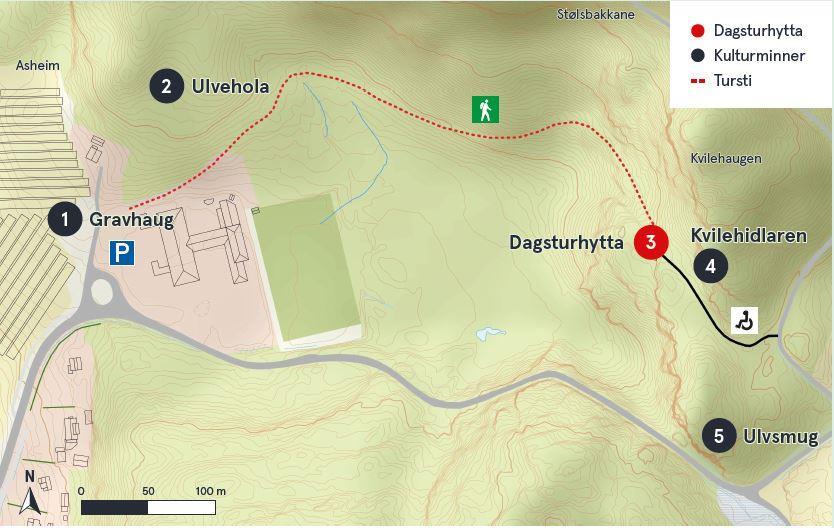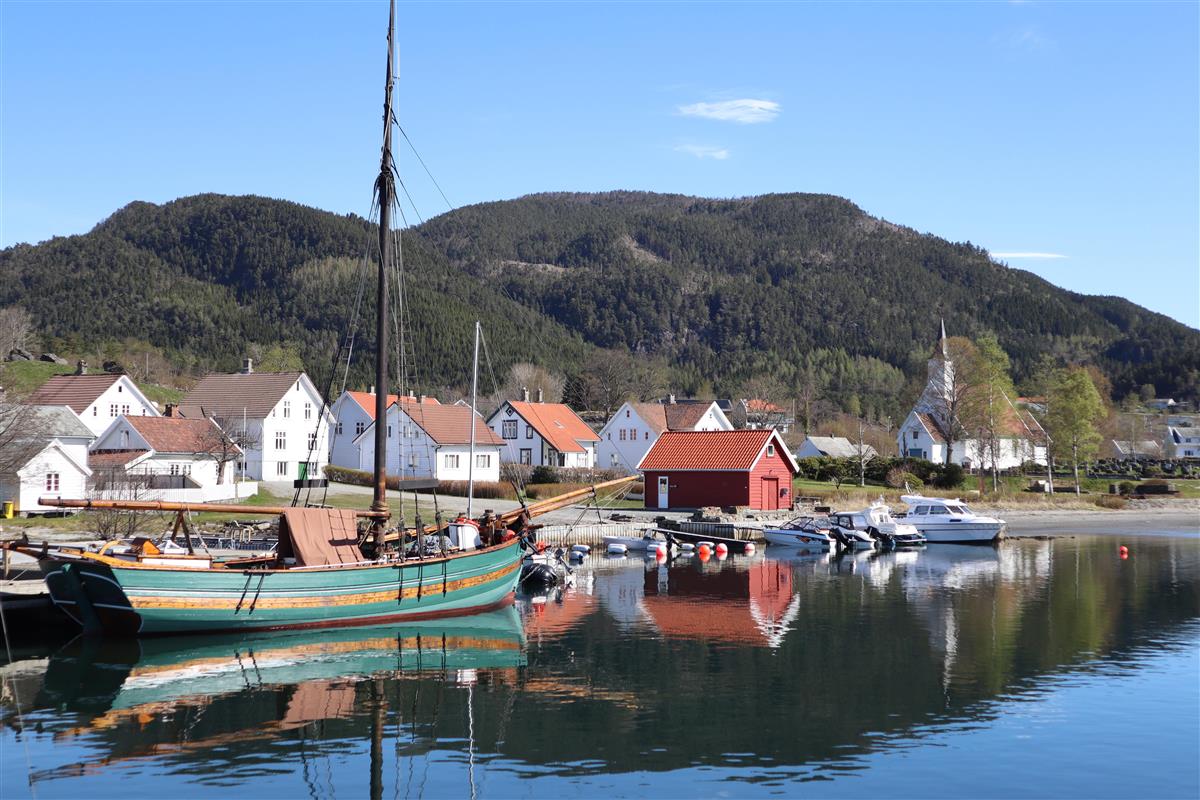The cultural landscape surrounding each day trip cabin embrace a rich cultural history. This makes every cabin and the journey there unique.
 The daytrip cabin – Dagsturhytta – and cultural heritage sites are marked with numbers. The hiking route is marked with dotted line. Route with high degree of accessibility is marked with black line.
The daytrip cabin – Dagsturhytta – and cultural heritage sites are marked with numbers. The hiking route is marked with dotted line. Route with high degree of accessibility is marked with black line.
Kvilehaugen lies within a cultural landscape of historical value During your hike to Kvilehaugen (3), you leave the fjord and settlement of Jelsa behind you and venture into outfields and wilderness.
The cultural landscape is shaped over thousands of years by those who have lived here.
Old place names demonstrate that there have been several farms at Jelsa in the Iron Age. Around the farms you can still see burial mounds from the Iron Age and Bronze Age (1). Jelsa is also known as a medieval church site, in the late13th century. From Økstrafjorden, the way to church went past Kvilehidlaren (4).
This is where churchgoers changed from their daily clothes into their Sunday best. Cultural remains from use of forest and upland resources are often modest, even though these outfield resources have been essential to the farming economy.
However, the forest also was also a place associated with danger and supernatural beings. At Ulvahola (2) you can see how the people of Ryfylke struggled with the threat of wolves.
Local folklore tells us that three beautiful troll women captured a man inside the rock at Ulvsmug (5). Do you dare to knock on their boulder?
 The historic fjordside town of Jelsa.
Øyvind Malmin
The historic fjordside town of Jelsa.
Øyvind Malmin
The historic fjordside town of Jelsa
Jelsa was a medieval church site and as a trading post the settlement blossomed in the late 17th and during the 18th century. Despite later development, much of the cultural landscape that the Vikings encountered can still be experienced. In several places there are cup marks where people since the Bronze Age have sacrificed for good crops and fertility.
Around the modern settlements, you can admire burial mounds from the Bronze Age and Iron Age. You can also see traces after charcoal kilns that bear witness to some of the earliest industrial adventure in the area. However, there are also archaeological heritage sites that are invisible above ground. Construction work for a new mortuary next to the church, led to the discovery of burial from the Migration Period. The woman had been placed on a pyre swept in bear fur and adorned with beautiful hairpins. She had then been cremated along with fine grave gifts and laid to rest in a small grave.
From other archaeological sites we know that families and societies often buried their dead close to where they lived. Gravemounds and cairns are commonly placed around the farm. We do not know the exact location of their houses here in Jelsa. Perhaps you can picture it, where would you build your farm?